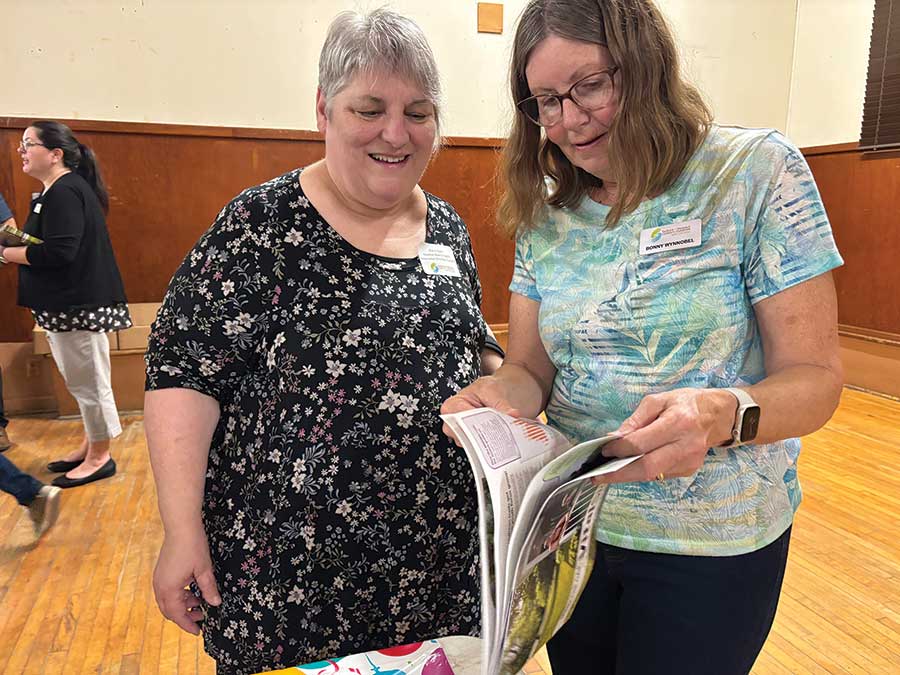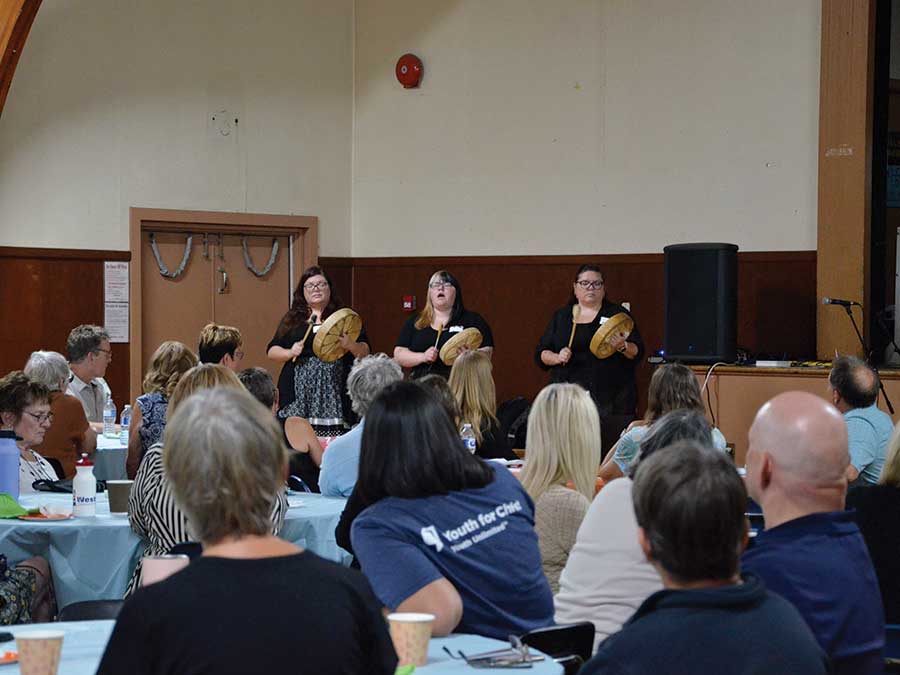Submitted by the Selkirk and District Community Foundation
A crowd of about 100 people came out to take part in the launch of Vital Signs 2.0 – Mind the Gap, held at Memorial Hall Oct. 2.


The Selkirk & District Community Foundation has spent the past 18 months working with the community to create the follow up to 2018’s first report, and for Co-Chair Brandon Sutherland, the moment was big.
“It’s a very proud moment this evening for me to be a member of this community,” said Sutherland, who chaired the Vital Signs team along with David Thorne.
“Growing up in Selkirk and seeing a lot of really valuable stakeholders in our community here tonight who have helped not only shape the Foundation but shape Vital Signs 1.0 and helped shape 2.0. And some new faces in the room as well that weren’t involved in the first one, it really shows how we’ve moved the needle and really introduced new people to that community stakeholder group.”
Vital Signs is a community check-up, used to measure the vitality of our region and to learn where we are strongest and where we need to improve.
Sutherland, along with Thorne and current Foundation Chair Deborah Vitt and Secretary Bonny Wynnobel, presented the entire report to the group and went through each of the 10 sectors.
For Thorne, the importance of Vital Signs can’t be understated, and the report is an invaluable tool for the Foundation and the community at large.
“Vital Signs provides us with critical local data to guide strategic decisions, it identifies community needs for funding, which is important to the Foundation, and it can inspire philanthropic action,” Thorne said.
“And it does more. It enhances the Foundation’s profile, it facilitates relationships with partners and donors, and it fosters public debate by offering evidence-based insights into quality-of-life indicators.”
Bonnie Singleton and Dianne Stolar of the Selkirk Food Bank were at the launch and have been part of the entire process of creating Vital Signs 2.0.
For Singleton, taking part in the planning session was an eye opener.
“With the planning for the Vital Signs report, what we found very interesting was how each sector, each area that has been identified, connects with food insecurity and accessibility,” Singleton said.
“So if we don’t have proper transportation, it’s hard to get to the food bank to get the food, if you don’t have proper income, that’s your food bank user, so that was one of the highlights that we found interesting.”
Stolar agreed and said the connection of the sectors struck her as well, and she likened the sectors to spokes on a wheel, all joined at the centre.
“I do think there’s a major connection. I’m not sure what the hub would be of the wheel, but the parts are all interconnected. You can’t have one without the other,” Stolar said.
The goal of Vital Signs is to spur the community into action, and the Food Bank is already doing that, with a food summit planned to try and get like-minded groups working together more cohesively and reduce overlapping of services.
“We’ve already started the process. The goal is to have everyone working together, make things more user friendly, more welcoming,” Singleton said.
“I found the whole thing really interesting, and it’ll be interesting to see what the future holds with this. I think it’s pretty exciting.”
For Sutherland, the launch of the report might signal the end of the gathering process, but it’s just the beginning for what the report can do. At 29 years old, he’s the youngest Foundation board member, and he says he was impressed with the young people he met during consultations.
“Some of the perspectives that we had from our youth group that we talked to at the high school were interesting. The challenges or some of the difficult points in their day-to-day life were not ‘I don’t have a restaurant close enough to my house’ or ‘I don’t have a restaurant close enough to my school that I can walk to,’ they had big world challenges. They were talking about active living trails, they were talking about rural transportation, urban transportation, and they were talking about the environment in a light that I didn’t have the where with all at the age of 16 or 17 to think about,” he said.
“There was a young man that we were talking to about the wastewater treatment plant in Selkirk, and how cutting edge it is, and how the water on the tail end of the water treatment plant is potable, and not only did they say that’s really cool, their thoughts went to ‘how can we reuse that water? How can we use it for irrigation, how can it be used for energy sources, how can it be used for heating and cooling?’ Those are some of the things that you don’t think about when you plan a Vital Signs consultation, the things that come up out of the blue, and it’s moments like that that make me very proud to be a member of the community of Selkirk and the surrounding areas.”
The report was handed out to everyone who attended the meeting, and more, will be delivered in the coming weeks. If you want a copy, or many copies, you can reach out to the Foundation at 204-785-9755 or at cd.officer@sdcf.ca
It’s also available online at sdcf.ca.
At the Foundation, Vital Signs is used to better inform granting decisions, and others in the community use it in their day to day lives as well. The Foundation uses it to guide its long-term strategic plan, and so can you. If you’re a non-profit organization or a government office, use this document to support your plans and policies on issues that matter to our citizens. If you’re a realtor or investor, consider this a deep dive into who lives, works and volunteers in this community. There is a wide variety of uses for this report.
“It’s a really proud moment to have conversations in a setting like this. In the 60 minutes that we have allotted, but it makes me more proud when we’re having further conversations or follow up meetings,” Sutherland said.
“It’s one thing to sit around a table and talk about what we can do to be better. It really takes dedicated people in our community to take that next step and say, ‘Hey, let’s go for coffee, let’s get a focus group together so we can actually take action on these issues.’ And that’s what we want out of Vital Signs, not just a buzz in the room about all the things we can do, it’s a buzz in the room, followed up by years of really positive work to make Selkirk, St. Andrews and St. Clements really great places to live.”
